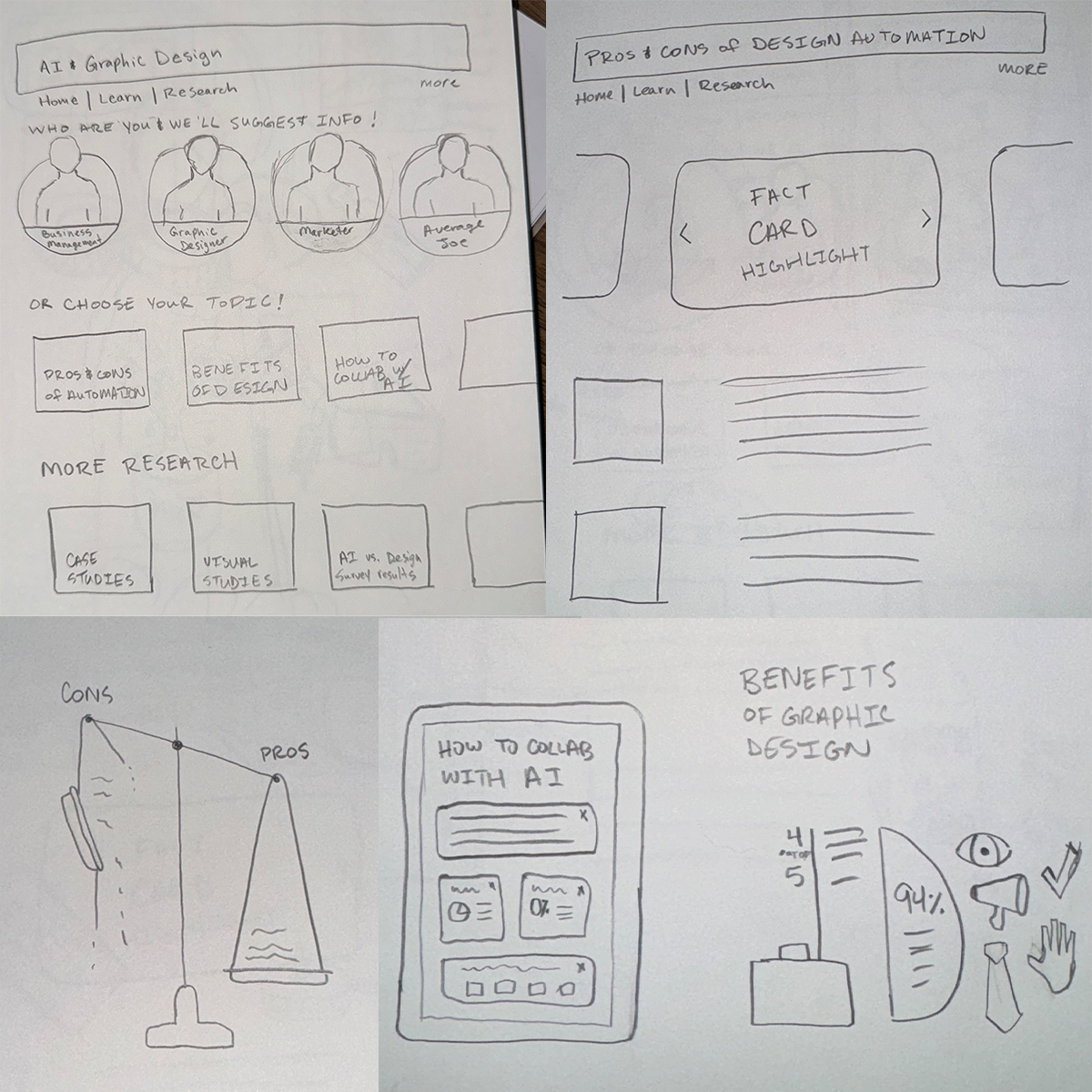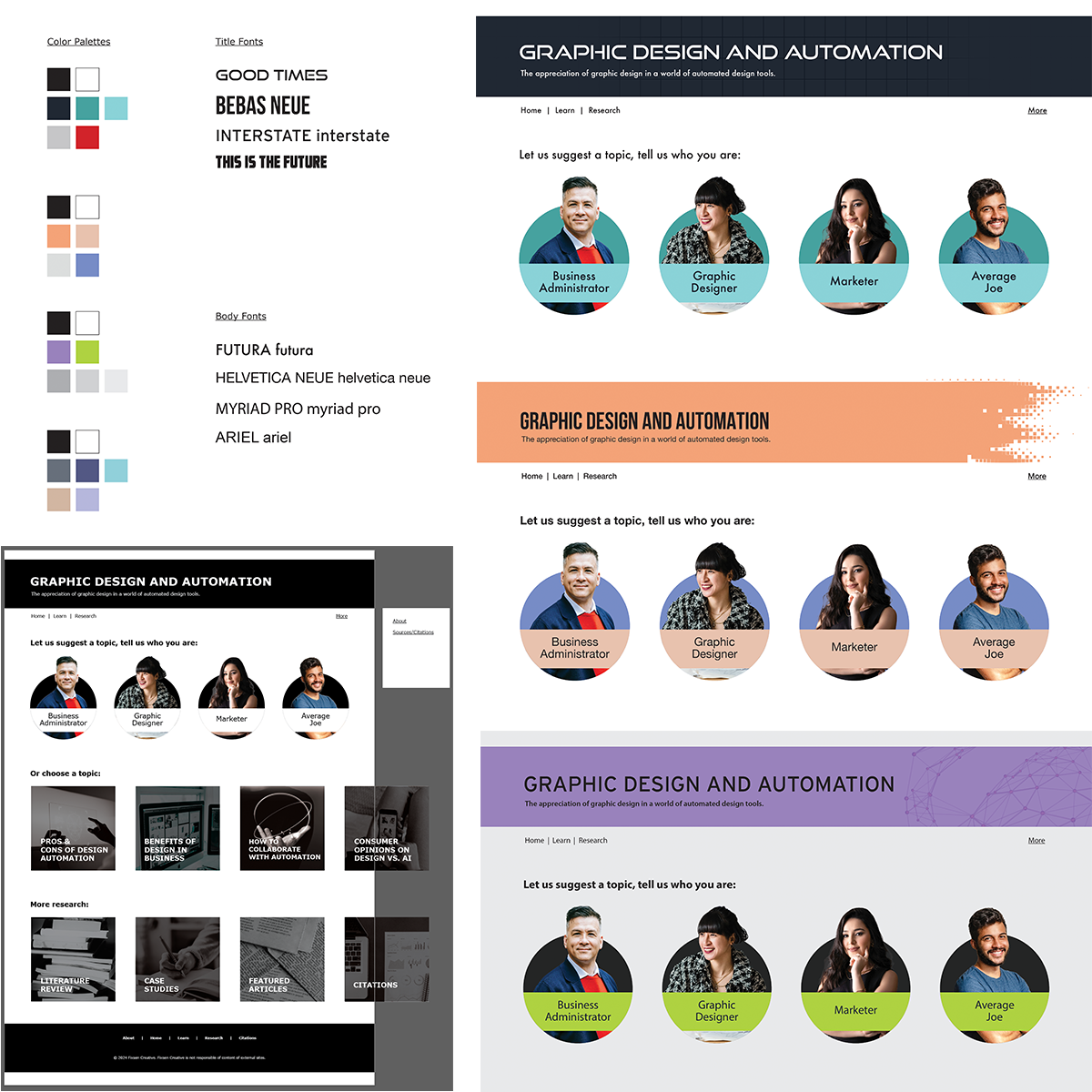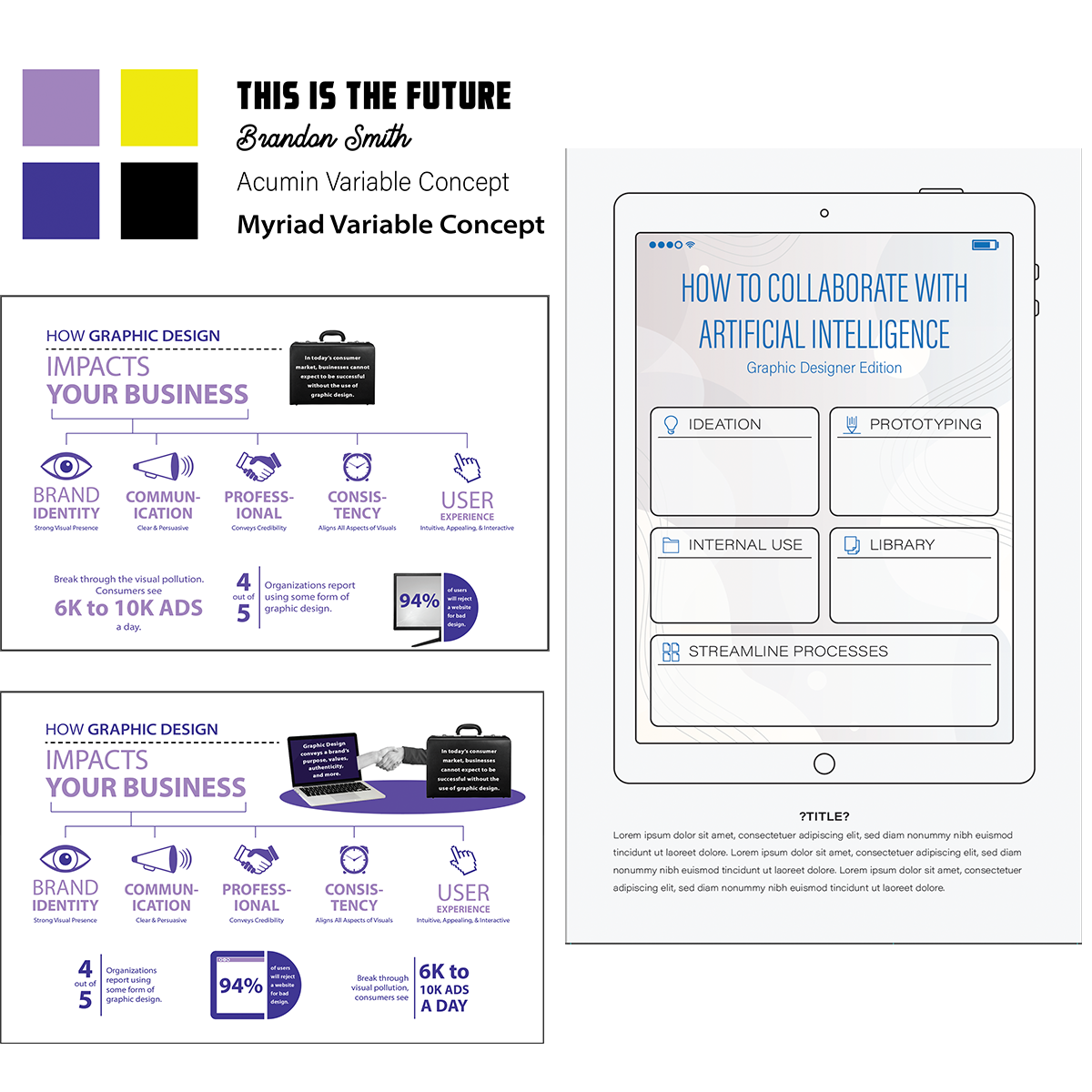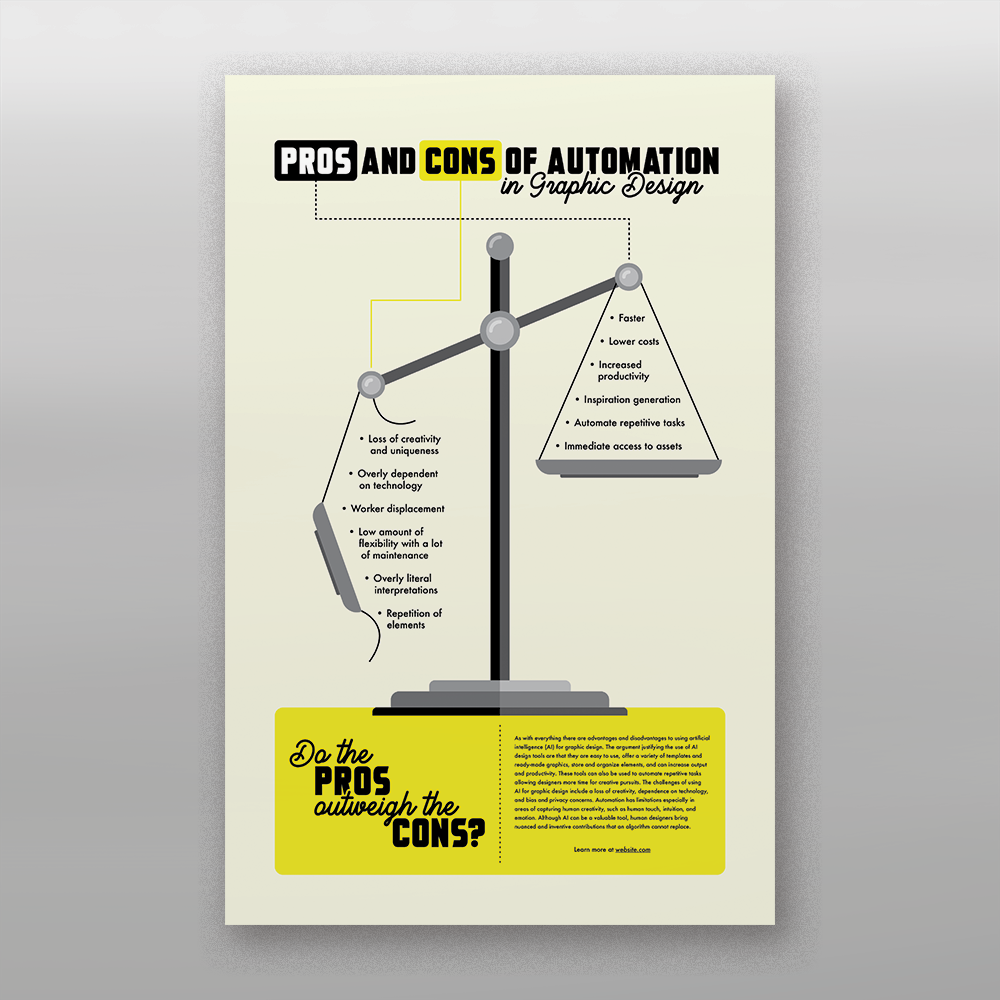GRAPHIC DESIGN AND AUTOMATION
The Appreciation of Graphic Design in a World of Automated Design Tools
Master of Fine Arts Thesis by Ellen Fixsen
Problem Statement
Small businesses fail to understand the limitations of automated design tools and the deficient outcomes they can produce, which can lead to a lack of understanding and implementation of good design principles, processes, and pedagogies.
Research
Summary
-
This research examines the use of artificial intelligence (AI), machine learning, and DIY-centric template tools in the area of graphic design and how they affect business’s using them for branding and visuals, and how that impacts the graphic design industry. Although the use of AI in graphic design is a fairly new trend, the technology has been developing over the last several decades, if not longer. With AI definitely here to stay, it has become vital to explore how businesses and designers will move forward and utilize the tools it offers. Incorporating historical and statistical evidence, professional insights, case studies, and visual analysis, this thesis compiles the challenges that outweigh the advantages of AI-generated design and provides insight in how to move forward with a solution. It argues that AI’s lack of human-touch, authenticity, and understanding of humanity is the prime reason that AI-creations in graphic design can be a tool that empowers designers, gives inspiration, and streamlines processes, but it can not be relied on to design independently.
-
Graphic designers are creative professionals who transform a client, company, or brandʼs vision by translating it into a visual representation that can be used in advertising, websites, print, and other marketing materials. Graphic designers play an integral role in successful marketing and branding ideation.
AI is one of the most rapidly advancing technologies impacting industries and the integration of AI and design is revolutionizing the ways designers can create visual content. In conjunction with AI, automated design tools have been developed. Automated design tools use AI to arrive at new designs based on data sets containing information about designs, various visual styles, users and audience data, and more.
-
With the rise of automated tools and platforms granting the masses the ability to design with no formal training, some in the graphic design industry worry it has and will continue to have a negative impact on the profession. Additionally, as automated tools integrate more and more technology, there is a fear within the graphic design community that professionals will lose work by way of these platforms. The most prominent factor that is still firmly in the grasp of designers is the ideation process as well as the application and management of designs. No automation tool or program is currently able to create a design from concept to implementation with no assistance from human interaction.
-
Todayʼs businesses cannot exist without graphic design. Behind every logo, website, product label, and advertisement are graphic designers utilizing their knowledge in design processes, principles, and psychology to combine artistic elements with design expertise that drive engagement and sales. With so much visual pollution across various medias and platforms it is imperative for businesses to find ways to stand out. Graphic design professionals create unique and customized content that avoids consumers tiring of repeated graphics and ignoring designs that look the same.
-
As automation in the field of graphic design continues to develop, it has become increasingly clear that while artificial intelligence can be a valuable tool, human designers bring nuanced and inventive contributions, culturally, emotionally, creatively, and otherwise, that AI cannot replace. Graphic design is still a huge responsible factor in the visual communication between businesses and their customers, making it crucial to ensure it is done to the highest standards.
The
Solution
-
• WEBSITE
Create an interactive website focused on educating businesses and marketers about the disadvantages of automated design and offer solutions toward utilizing and appreciating the nuances a human designer brings to the work.• PRINT INFOGRAPHICS
Create print versions of information from the website in visually stimulating, easy-to-understand infographics. These infographics can be a handout or a leave behind pushing audiences to learn more on the website. -
• PRIMARY AUDIENCE: INDUSTRY
Any business, marketer, or designers that utilize graphic design for print and digital materials, such as advertising, brand awareness, websites, packaging, apps, promotion, and more.• SECONDARY AUDIENCE: SOCIETY
Consumers in society that purchase the brands and products that use graphic design to entice them. Hobbyist who wishes to understand how graphic design impacts business and marketing. -
The intended outcome of the created visual solutions is to inform and educate business owners of the deficiencies of automated design tools and encourage them to utilize human graphic designers, when automation isn’t appropriate, who can provide them with better quality and understanding of design principles, processes, and pedagogies. Therefore, an interactive and compelling awareness campaign was created to address the issue. A website was chosen as the best solution because of the agility and ease that is possible when it comes to sharing a website. The additional print media can be used in more informational settings like lectures, conferences, events, or as a leave-behind at businesses.
The Process
Final Visual Solutions
The visual solutions bring awareness and educate the desired audiences that need to more deeply understand the research problem. Bringing awareness can influence action and change, in this case, lead businesses to better comprehend the deficiencies of automated graphic design and the advantages of working with a human designer. These solutions aim to take the target audience from unaware to aware of the problem and aware of pathways to move forward.
Thank
You!
Completing my Master’s of Fine Arts degree has been a journey that would not have been possible without the support, guidance, and expertise of many amazing people.
There are many family, friends, and mentors who have contributed to my success, and I especially would like to thank Wanda Fixsen, Jacob Brockelman, Heather Wagoner, Jeremy Bohn, Dalsy Cupp, and Kimberly Bird.
Completing this degree would also not have been possible without the faculty who have advised me through the process. Thank you Professor Joshua Wilson for your detailed explanations and constructive feedback, Professor Sarah Jackson for your positive reinforcement and valuable input, and Dr. Andrea Lawyer Lucas for your attention to detail and communication expertise.













